Ryzhiks - a forest delicacy with a refined taste, popular in our country. Their taste qualities are not inferior even to mushrooms of the genus Borovikov. When damaged, they secrete a special juice, therefore it is impossible to confuse them with poisonous ones. Confusion can arise only between representatives of the same genus. You can distinguish mushrooms from false mushrooms by external features, which are clearly visible in the photo, the color of the juice and the smell.
Content
Characteristic features of mushroom species
Mushrooms belong to the genus Mlecnik of the family Russula. They grow in large groups mainly in coniferous forests. A characteristic feature of the genus Mlechnik is the presence of milky juice in its representatives. In this species, it is colored pink or red and changes upon contact with air, turning green.
There are several subspecies of saffron milk cap:
- Spruce.
- Red.
- Milky red.
- Pine.
Spruce
Representatives of the spruce subspecies, or spruce forests, are common only in coniferous forests. They can be found under the fir trees. Together with the roots of this tree, they form mycorrhiza.
The spruce hat has a bright orange color. Its edges are curved, slightly raised up. In the center, it is slightly greenish. In adults, green spots and circles on the surface are not clearly visible.
The foot of the spruce reaches 7 cm. The pulp is very tender, so the spruces often wrinkle and are damaged in the basket of the mushroom picker. Milk juice appears at the site of damage. It turns green in the air.
Red
Red subspecies is common in pine and spruce forests. Representatives have a dense hat of red-pink hue. Its diameter reaches 10 cm. The edges are slightly raised, and in the center there is a recess. The surface of the cap is free from sticky coating.
The leg grows up to 6 cm. It can have a color of shades of orange and red, more often there are specimens with purple-pink legs. The leg of a red saffron mushroom is covered with a small coating and is completely dotted with small recesses of crimson color.
The pulp is pink in color with single burgundy blotches. Juice of young individuals is painted in bright red color, and in old mushrooms it is slightly darker, closer to burgundy color.
Milky red
Representatives of the milky-red subspecies grow in coniferous forests, under pine trees. They have a thick fleshy hat with a diameter of up to 9 cm. Its edges are slightly tucked down, and in the center there is a depression characteristic of lacticians. The main color is light orange, but as the fungus grows, its edges acquire a pinkish tint, and the middle turns green.
This subspecies has a very narrow and fragile leg, growing up to 7 cm. The flesh is brittle, orange in color. Juice also has an orange tint, but in air it rapidly turns red, and then acquires a greenish tint.
Description and difference of false saffron mushrooms
Most false arches have individual characteristics, by which they are easily distinguished from real ones. In order to understand that a false mushroom is growing in the meadow instead of a camelina, it is necessary to know its description and individual characteristics.
Pink waves
Despite belonging to the conditionally edible, pink threesomes are considered a real delicacy. True, you can eat them only with the strictest observance of special cooking technology.
The cap of pink waves is painted in shades of pink, orange and red. It has a funnel shape with slightly raised fringed edges. A distinctive feature of waves is circles on the surface, which are clearly visualized. These mushrooms have a very short leg, which over time acquires a color to match the hat.
It is very easy to confuse waves with saffron mushrooms, since they look similar in appearance. But between the false mushroom and saffron milk there are a number of striking differences:
- The edges of the tops are fringed, and in saffron milk cap they are smooth.
- The circles on the head of the wave are very bright, with saffron milk they are not so distinct.
- The foot of the trap is much shorter.
- The milky juice of the trap does not change color.
If doubts remain, just press on the recess in the hat. After that, milky juice will appear on the surface. It has an unpleasant odor in waves.
Amber Milkmen
Amber milkers are defined as an inedible and slightly poisonous category. The hat of representatives of this species can have any shade of red and yellow color palette. It is shiny, flat, with smooth edges. As you grow older, the hat rises. The leg always matches the color of the hat.
It is impossible to distinguish amber milkers from saffron milk by external signs. They are like twin brothers, one of which is tasty, and the second is inedible and dangerous. Experienced mushroom pickers distinguish them by smell.
Papillary milky
The papillary miller is also known by the names papillary lactum or large lactic. It refers to conditionally edible and is edible only after applying a complex cooking procedure.
Miller is common in coniferous, deciduous and mixed forests. Outwardly, it resembles a breast. Its gray-brown hat has a dry matte surface. The mushroom pulp is white, brittle.
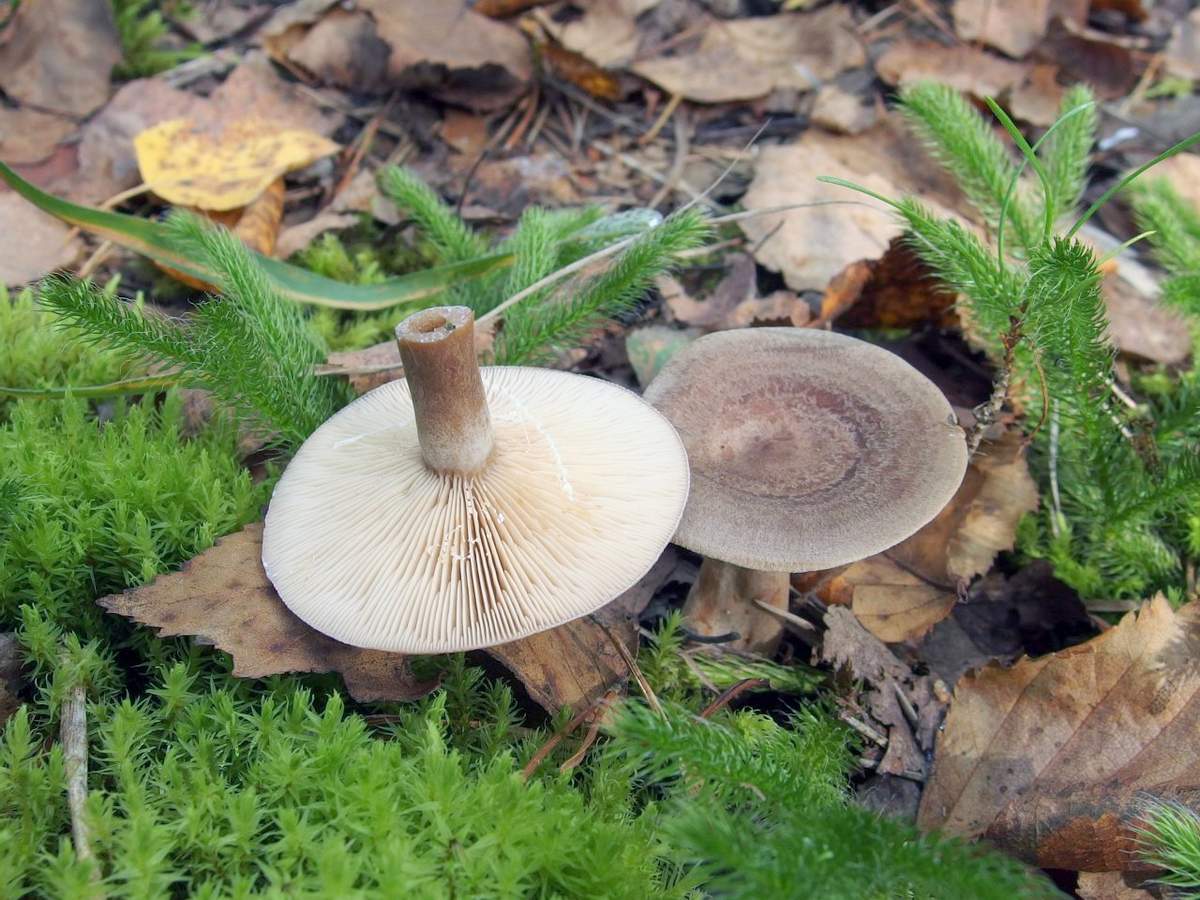
Mushrooms are often confused due to the brown color of the hat and brittle flesh. If in doubt, you can damage the mushroom and look at the color of its juice: it will remain white in the milkman. There is another way to check: the pulp is rubbed in the palms of the hands. In a milkman, it will smell faintly of coconut.
Death cap
To confuse mushrooms with a pale grebe is difficult and very dangerous for health. Pale grebe belongs to the genus Mukhomorov and is considered a very poisonous mushroom, poisoning of which can lead to death.
Toadstool has a funnel-shaped hat with smooth edges. The color of the hat is variable: from yellowish to olive. In the central part, it is one tone darker, and at the edges it is one tone lighter. The hat is mounted on a thin elongated leg. Between them is a white skirt.
The only common feature between the mushrooms is the funnel-shaped shape of the cap. But in saffron milk it has a wrapped edge, and in a grebe - even. To dispel all doubts it is necessary to incise the mushroom: edible will give white juice, which will soon turn green, and the toadstool will remain dry. It should also be noted that an adult toadstool emits an unpleasant sugary sweet smell.
Answers to widespread questions
Mushroom pickers, especially inexperienced ones, have a lot of questions related to the differences between saffron milk mushrooms and false mushrooms:
The first signs of false mushroom poisoning coincide with the symptoms of any food poisoning. These are nausea, vomiting, diarrhea, dizziness and acute abdominal cramps. Some people have a headache, weakened pulse, lowered blood pressure.
False saffron mushrooms and just saffron mushrooms belong to different mushroom groups. Pink traps and papillary lactos are considered conditionally edible and are taken only after special processing, but they do not have a special taste. Amber milkers are considered inedible.A pale toadstool does belong to one of the most dangerous mushrooms, therefore, it is impossible to eat it in any case.
Not all poisonous mushrooms have an unpleasant smell. Some of them do not smell at all. In the case of saffron milk this rule works. They are distinguished from grebe and lactarius by the unpleasant odor emanating from poisonous mushrooms.
Undoubtedly, saffron mushrooms are one of their most delicious mushrooms that are found in our open spaces. But often inexperienced mushroom pickers bring false mushrooms in the basket, which are actually throats, milkmen, or even grebes. To avoid such mistakes, before the trip, you should familiarize yourself with the individual characteristics of each type of mushroom in detail.

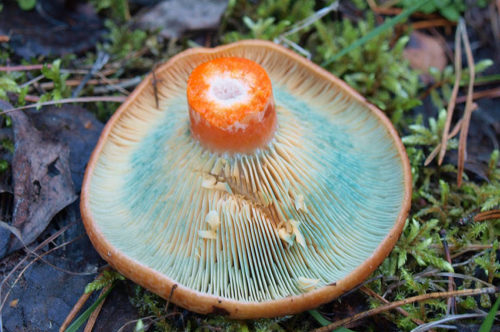
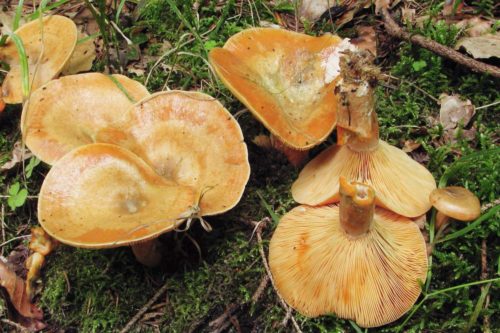
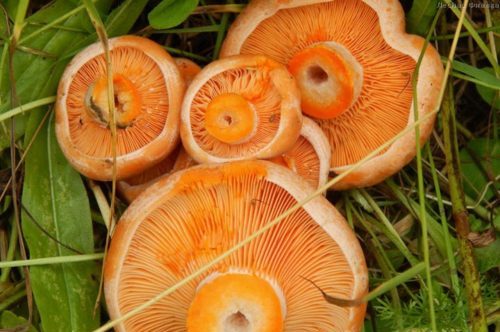
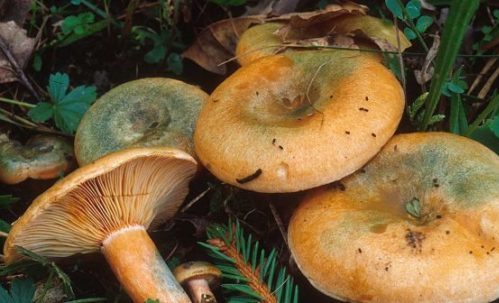
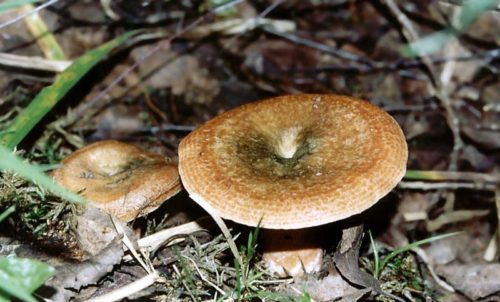
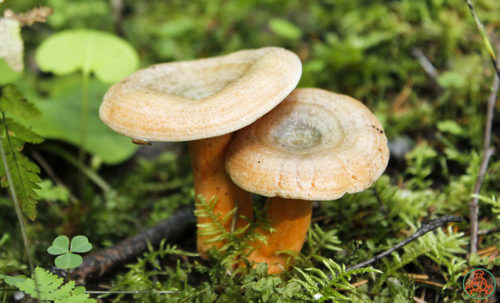
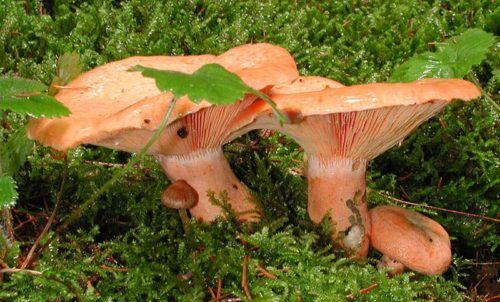
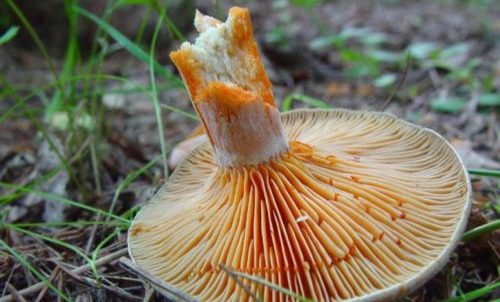
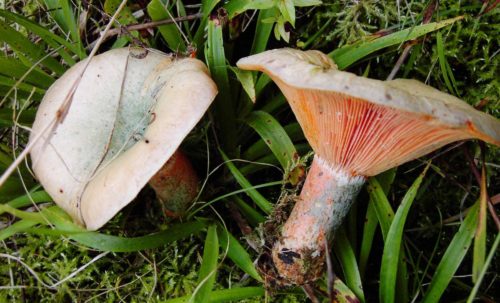
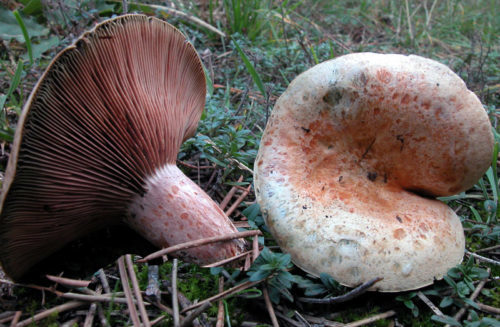
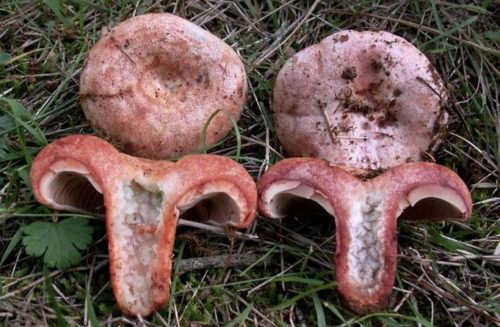
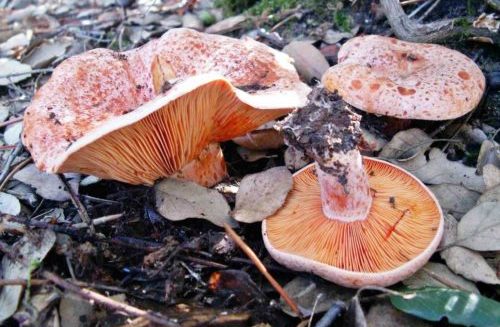
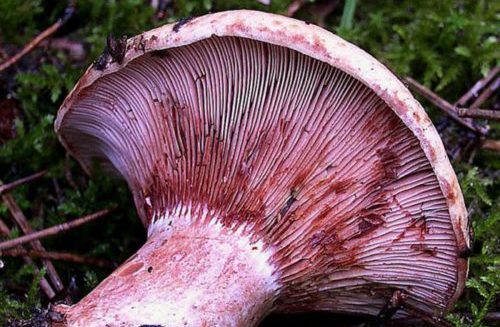
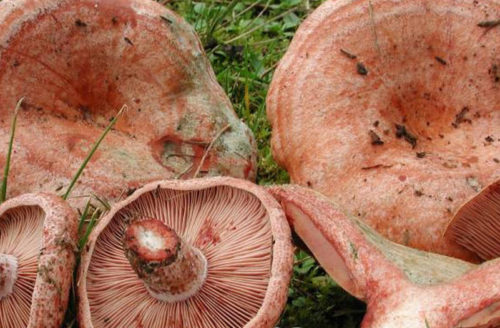
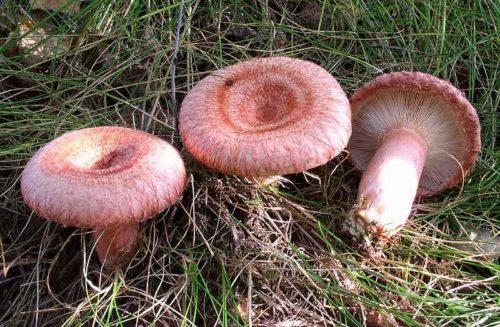
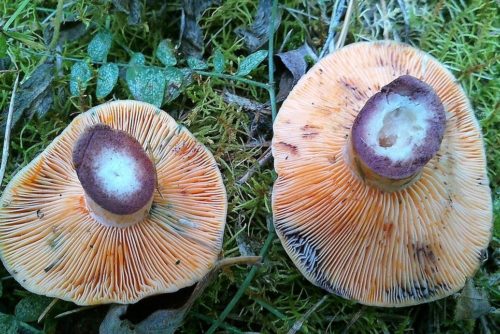
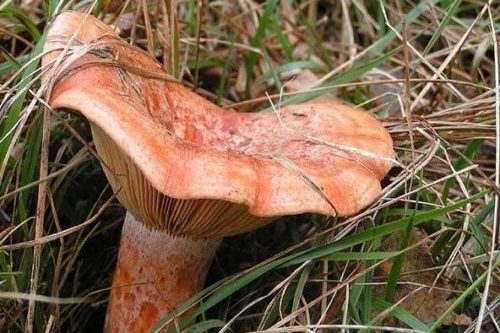
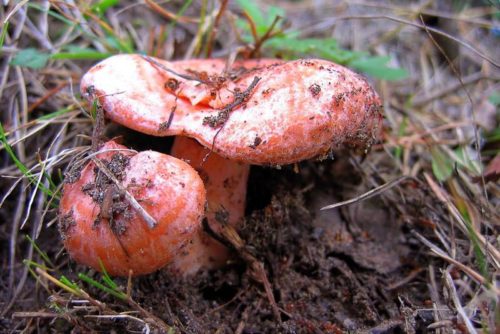
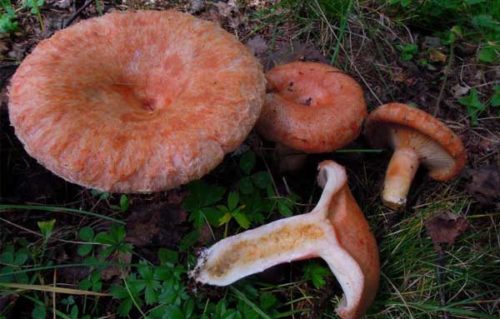
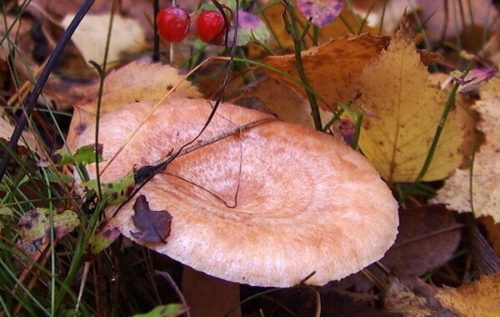
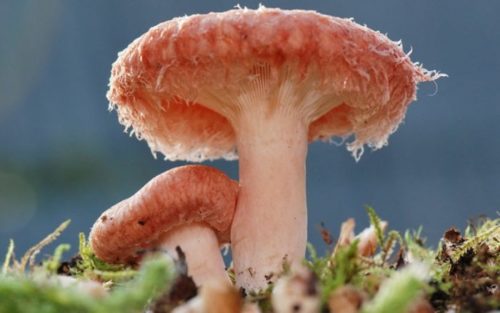
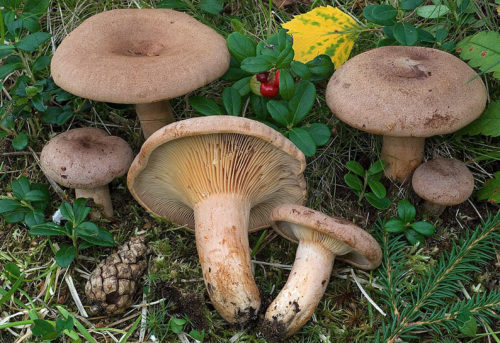
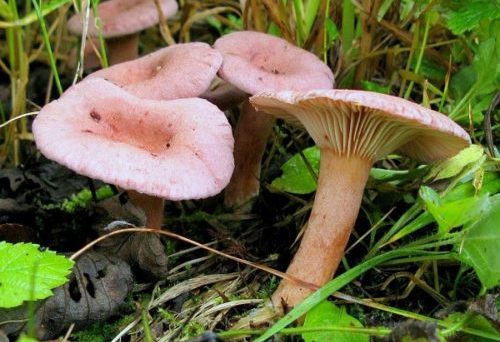
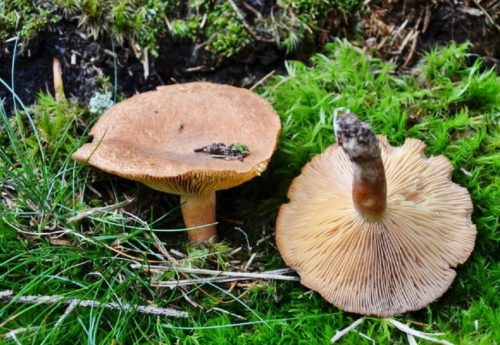
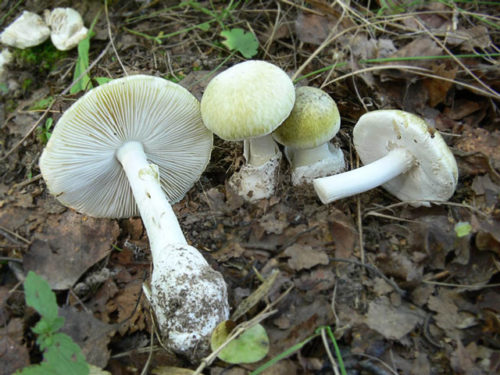
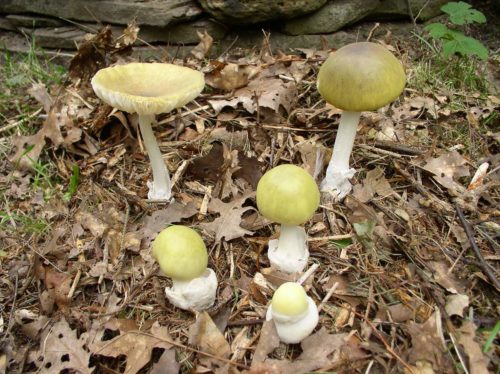

 Care and use of Kombucha at home (+22 photo)
Care and use of Kombucha at home (+22 photo) Edibility of the fungus of the motley umbrella and its description (+19 photo)
Edibility of the fungus of the motley umbrella and its description (+19 photo) Description of edible and inedible oils, their poisonous counterparts (+40 photos)
Description of edible and inedible oils, their poisonous counterparts (+40 photos) Useful properties of milk mushroom and its contraindications (+17 photos)
Useful properties of milk mushroom and its contraindications (+17 photos)
Valeri Mishnov
In addition to the pale grebe-Everything else is just nonsense. The flaxworms and lactos have never been false mushrooms. For seventy years I have been successfully collecting them and am happy to bite vodka with them.
Boris
Amber milkers are not even conditionally edible, the liver will fall off eating this ...
Vladimir
I always collected amber milkers and salted them like earrings (like bitter) ... Delicious mushrooms ...
Novel
I really liked the description of false saffron mushrooms !!! Like - this false saffron, which is false ... Everything is extremely clear!
Svetlana
One question is what did you smoke or what mushrooms did you eat to write such nonsense.